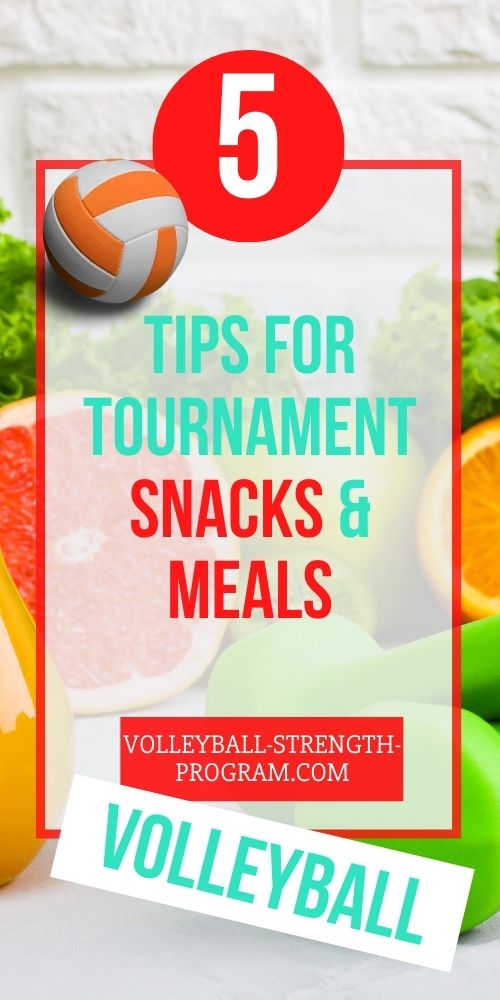Volleyball Nutrition…What to eat and what not to eat to be successful at volleyball
How’s your volleyball nutrition?
Theres no such thing as good or bad food; there is only good and bad times to each certain foods. The above statement is important because it is true that there are actually very few BAD FOODS.
Sodas, juices, processed meat, ice cream, cookies, crackers, foods with white flour, and potato chips should be avoided if possible.
If you want to be a great volleyball player, you must remove foods that will turn your body into a toxic waste dump and take away your energy. If you thought eating healthy was only important for people trying to lose weight, think again.
Volleyball nutrition is very important for becoming a stronger, more athletic volleyball player.
Here are some things you should be consuming…
Water, boneless chicken breasts, cheeses, dried fruit, eggs, lean ground sirloin, fruit, extra virgin olive oil, green tea, grains, lean turkey, legumes, meat, poultry, fish, mixed nuts, salmon, and vegetables are important to your health.
Foods You’re Better Off Living Without
Sodas and juices. Most fruit juices have high amounts of sugar and water.
High fat processed meat. Sausage, pepperoni, bacon and related foods are loaded with the type of fat that will shorten your lifespan, and are also loaded with sodium. These poor food choices shouldn’t be confused with good sources of protein.
Frozen desserts and ice cream. Ice cream just has more sugar and few nutrients. Youre better off without all the sugar and extra empty calories.
Most processed foods. Products packaged in colorful wrappers, boxes, bags or containers are likely highly processed. These foods promote healthiness but fail to admit the degree of processing it went through. Do your own experiment – next time you are unsure of a processed food just take a look at the ingredient list. If you see more than 5 ingredients that you can not pronounce then you have to wonder what the heck you are putting in your body. Most of these foods have fillers that preserve the shelf life and have nothing to do with nutrient value.
Cookies. Are your cookies highly processed?
Crackers. Most crackers sold in grocery stores are processed and loaded with sodium.
White flour products like white bread and bagels. Manufacturers take out nutrients such as wheat seeds bran, its six outer layers, and the germ. Vitamins, minerals, and fiber is being lost. Also, a few synthetic nutrients are added back into the white flour and labeled enriched, but in reality there has been no real enrichment of the original product.
If you enjoyed these tips and would like to keep it close to you at any time, just save this pin to your Pinterest Volleyball Training Board.

What to Add to Your Kitchen – Volleyball Nutrition
Beverages. Start drinking a lot of water. Also, drink 2-3 cups of green tea a day for its high antioxidant profile and more than a handful of health reasons. Throw out the the killer fruit juices and soda!
Boneless Chicken Breasts. If you can’t afford the for free-range chickens (organically raised), then go with the grain-fed, store-bought type because they carry minimal body fat.
Cooking Spray. Only buy the cooking sprays made from canola or olive oil.
Cheese. Typically, the cheeses that have a stronger taste have a better protein and fatty-acid profile. Cheese is higher in fat so use it in moderation and aim for a variety of cheeses such as Feta, goat, Havarti, aged white cheddar and Parmesan.
Dried Fruit. Just a small handful of some dried fruit has the same amount of calories as a large apple. If you are trying to lose weight then be very cautious. Good sources of dried fruit are currants, dates, pears, mango, apples, and banana.
Eggs. Omega 3 eggs are the best choice because they are laid by chickens that were fed a diet rich in ground flaxseed. Omega 3 fats are important for volleyball nutrition because they improve volleyball player knee and joint health.
Extra Lean Ground Sirloin. Always go for the leanest sources available. Your local grocery store should meet your requirements but feel free to venture down to a farmers market and go for grass-fed beef freshly ground.
Fruit. For your volleyball nutrition, always go for an assortment of colors and make sure your fridge is always stocked with fresh fruit. Examples of good fruit choices are apples, grapes, bananas, kiwi, raspberries, blueberries, strawberries, mango, oranges, tangerines, and pineapple.
Extra Virgin Olive Oil. This oil can be used in salads and sauces. It’s loaded with antioxidants is an easy source of calories.
Green Tea. An organic green tea without any extra herbs is the best.
Grains. The best grains are oats, oat bran, whole flaxseed, quinoa, whole barley and wheat bran.
Legumes. Kidney beans, split peas, chickpeas and lentils are excellent sources of fiber and a great addition to your volleyball nutrition.
Meat, Poultry and Fish. Eat a wide variety and do not limit yourself to a single grocery store. Whether it’s a small market or supersized grocery store, each will carry a different selection of meats.
Mixed Nuts. These are easy calories and a great source of good fat.
Salmon. Genuine wild salmon is better than farmed salmon because you will benefit from its higher quality Omega-3 profile and absence of mercury and toxins.
Spices. If you’re not a gourmet chef, just focus on some of the basics like salt, pepper, fresh garlic, basil, oregano, chili powder, and cinnamon.
Vegetables. You should get familiar with vegetables from your local market. Here are important vegetables for volleyball nutrition… spinach, broccoli, peppers, asparagus, tomatoes, mushrooms, onions, cucumbers, celery and carrots. When choosing vegetables, try and aim for the colors of the rainbow and you’ll be fine.
Volleyball › Coaching Lessons › Volleyball Nutrition
